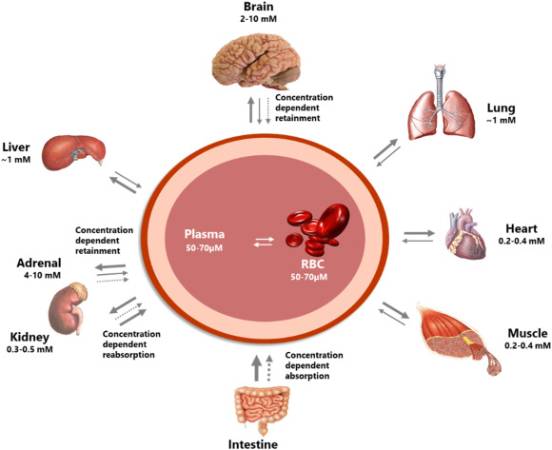Ascorbic acid metabolism and functions: A comparison of plants and mammals

Summary
Ascorbic acid is synthesized by way of eukaryotes, the recognized exceptions being primates and certain other corporations of animals which have lost practical gulonolactone oxidase.
Prokaryotes do no longer synthesize ascorbate and do now not require ascorbate supply, accordingly essential capabilities for mammals and plants are not required or changed by means of other compounds. Ascorbate's capability to donate electrons lets in it to act as a unfastened radical scavenger and decrease the higher oxidation states of iron to Fe2+. These reactions are the idea for its biological interest in addition to the relative stability of the resulting resonance-stabilized monodehydroascorbate moiety. The significance of those properties is underlined by way of the evolution of at the least 3 biosynthetic pathways and the manufacturing of an ascorbate analog,
Erythroascorbate, with the aid of fungi. The iron-reducing interest of ascorbate maintains the Fe2+ reactive middle of two-oxoglutarate-structured dioxygenases (2-ODD), as a consequence preventing inactivation. These enzymes have numerous capabilities, and the possibility has recently been determined that ascorbate status in mammals may also have an effect on 2-ODDs worried in histone and DNA demethylation, for this reason influencing stem cell differentiation and development. Cancer. Ascorbate is involved in the absorption and delivery of iron in plant life and animals. While the above biochemical functions are shared among mammals and vegetation, ascorbate peroxidase (APX) is a own family of enzymes restrained to vegetation and photosynthetic protists.
It gives these organisms with a more capacity to get rid of H2O2 produced via photosynthetic electron transport and photorespiration. The Fe-reducing interest of ascorbate lets in the manufacturing of hydroxyl radicals (pro-oxidant impact) and the reactivity of dehydroascorbate (DHA) and the response of its degradation merchandise with proteins (dehydroascorbylation and glycation) are doubtlessly harmful. Ascorbate popularity influences gene expression in flowers and mammals, but there is currently little evidence that it acts as a specific signaling molecule. It maximum probable acts in a roundabout way by influencing the redox state of thiols and a pair of-ODD hobby. However, the possibility that dehydroascorbylation is a regulatory publish-translational protein change might be explored.